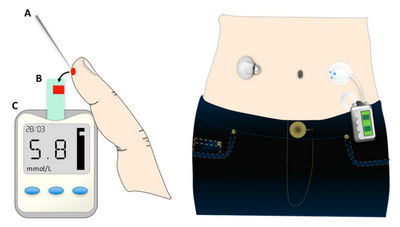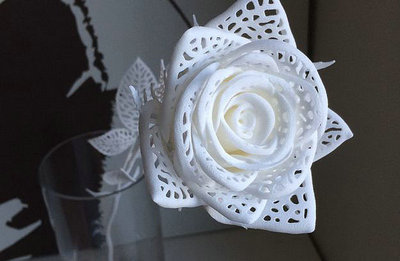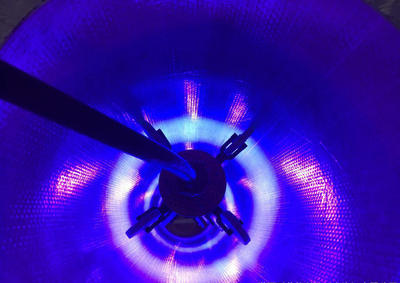Glucose testing is a measure of glucose in the blood, and this glucose is not only in the blood, but also in the body's other physiological fluids, including intercellular fluid, urine, sweat, saliva and eye fluid. Therefore, traditional blood glucose detection can also be achieved by measuring glucose concentration in other physiological fluids.

Today, scientists in Ireland and Australia have developed a simple and fast method for measuring glucose using 3D printing and fluorescent materials. Through this technology, if the blood glucose content is high, the detection equipment will emit strong fluorescence (446nm wavelength) under the ultraviolet light of 407nm wavelength, while when the blood glucose is low, the fluorescence intensity will be low, which is very intuitive, convenient and fast, and will not cause any pain to the human body.
The fluorescent material used here is a chemical called solvent green 7(Pyranine). The fluorescence properties of the solvent green 7 depend on the paired organic boric acid state. Glucose itself is a polyalcohol substance containing multiple hydroxyl groups. When the hydroxyl groups in glucose are combined with boric acid to form an ester, the solvent green 7 will fluoresce under ultraviolet irradiation. When boric acid is not hydroxyl reacted, the solvent green 7 does not emit fluorescence. The reaction of glucose and boric acid is reversible, which can be used to detect glucose concentration.
Based on this photocurable 3D printing technology, the material whose fluorescence intensity changes with the change of blood glucose concentration can make the detection of blood glucose simple, intuitive and painless, and can also be continuously monitored, thus greatly improving the detection efficiency and high accuracy. The eventual commercialization of this technology will greatly improve the treatment of diabetes. And because sugar is such a ubiquitous substance in the biological world, other applications of this technology are also promising.

References:
Bruen, D., Delaney, C., Chung, J., Ruberu, K., Wallace, G. G., Diamond, D., & Florea, L. (2020). 3D Printed Sugar‐Sensing Hydrogels. Macromolecular Rapid Communications, 1900610. doi:10.1002/marc.201900610
Bruen, D., Delaney, C., Florea, L., & Diamond, D. (2017). Glucose Sensing for Diabetes Monitoring: Recent Developments. Sensors, 17(8), 1866. doi:10.3390/s17081866

Extended reading:
4-Benzoylphenyl acrylate is a kind of photoinitiator with great value in UV coating fields. 4-Benzoylphenyl acrylate is also named as 4-Acryloxybenzophenone; 4-Benzoylphenylacrylate; 4-Acryloyloxybenzophenone; (4-benzoylphenyl)prop-2-enoate; 4Chemicalbook-Benzoylphenylacrylatefandachem; 2-Propenoicacid,4-benzoylphenylester; 2-Propenoicacid,4-benzoylphenylester.
Reg Office: Room 435, Building 9, No.2568 Gudai Road, Minhang District, Shanghai, China.
Pilot Lab: Building 1, No. 589 Qinling Street, Shijiazhuang High-tech Zone,Hebei, China.
Plant Unit 1: Xincheng town clean chemical park, Xinji, Hebei, China.
Plant Unit 2: Dongming County South Chemical Park, Heze City, China.
Tel: +86-21-34943721
Email:Massive@massivechem.com
Info@massivechem.com
Shanghai Massive Chemical Technology Co., Ltd. All Rights Reserved(C)2023 Supported by Record number:沪ICP备18008139号